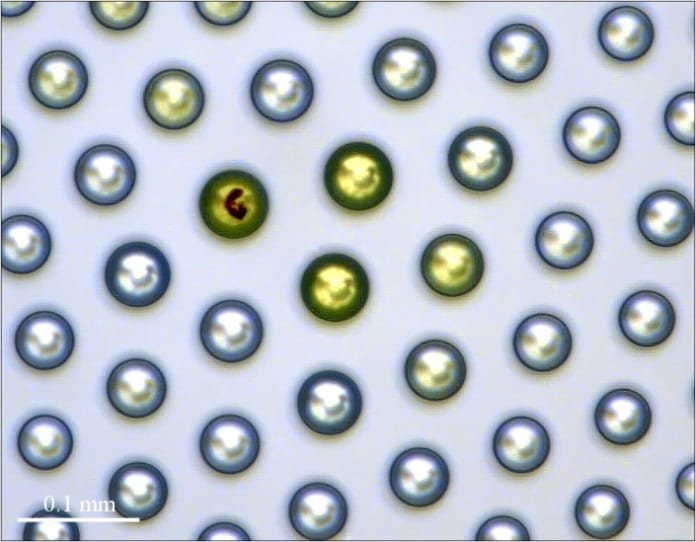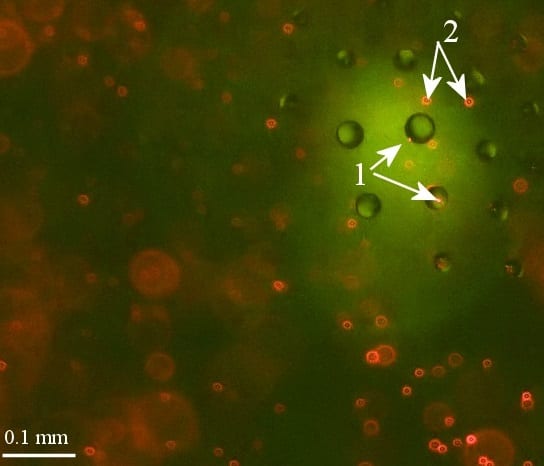Condensed microdroplets play a prominent role in living nature participating in various phenomena, from water harvesting by plants and insects to microorganism migration in bioaerosols. Microdroplets may also form regular self-organized patterns, such as the hexagonally ordered “breath figures” on a solid surface or levitating monolayer droplet clusters over a locally heated water layer. While the breath figures have been studied since the 19th century, they found a recent application in polymer surface micropatterning (e.g., for the superhydrophobicity). The droplet clusters were discovered in 2004, and they are subjects of an active research. Methods to control and stabilize droplet clusters make them suitable for the in situ analysis of bioaerosols. Studying life in bioaerosols is important for understanding microorganism origin and migration; however, a direct observation with traditional methods has not been possible. In our new paper we report preliminary results on direct in situ observation of microorganisms in droplet clusters. We also present a newly observed transition between the hexagonally ordered and chain-like states of the droplet cluster.
Alexander A. Fedorets, Edward Bormashenko, Leonid A. Dombrovsky, and Michael Nosonovsky “Droplet clusters: nature-inspired biological reactors and aerosols” Phil. Trans. R. Soc A (2019) Vol. 377, issue 2150, 20190121, DOI 10.1098/rsta.2019.0121.
https://royalsocietypublishing.org/doi/10.1098/rsta.2019.0121
Philosophical Transactions of the Royal Society of London is the oldest scientific journal in the world where Isaac Newton, Charles Darwin, Benjamin Franklin, Stephen Hawking, and many other distinguished scientists have published their work.
Microreactors. Observation (first time ever in literature) of a droplet cluster with a non-volatile water-soluble yellow dye injected into several droplets:

Observation (first time ever in literature) of microorganisms encapsulated into a droplet cluster. Chlorella vulgaris Beijer, chlorophyll fluorescence colored with LIVE/DEAD BacLight Bacterial Viability Kit:

Please see also the presentation “PHYSICS OF SELF-ASSEMBLED LEVITATING CLUSTERS OF WATER DROPLETS” at THE FIRST INTERNATIONAL CONFERENCE ON NATURE INSPIRED SURFACE ENGINEERING (NISE-2019), Stevens Institute of Technology, New Jersey, USA, June 12-14.
See also “Nosonovsky’s research published by world’s oldest scientific journal”